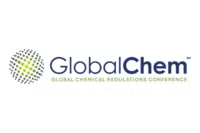ACC Formaldehyde TSCA Risk Evaluation Consortium submits summary of publications to inform TSCA risk evaluation
WASHINGTON (August 30, 2021) – The American Chemistry Council (ACC) Formaldehyde TSCA Risk Evaluation Consortium (the Consortium) submitted to the Environmental Protection Agency (EPA) a summary of published state-of-the-art scientific data and information to inform the TSCA risk evaluation of formaldehyde. The 41 peer-reviewed studies, summarized in a letter appearing on EPA’s public docket today, demonstrate three critical findings: inhaled formaldehyde does not migrate beyond the nose; safe thresholds exist; and most notably, a causal association between inhaled formaldehyde and leukemia is not biologically plausible. This compelling and comprehensive information provided to the Agency will inform the dose-response and hazard assessment portions of the formaldehyde TSCA risk assessment.
“Global agencies, including The World Health Organization and the European Chemicals Agency, have concluded that there is no consistent association between formaldehyde and leukemia,” said Robert Simon, Vice President, Chemical Products & Technology, ACC. “Even though formaldehyde is already one of the most well-studied and highly regulated substances in commerce today, it is understandable that the public may still have questions regarding its safe use and worker protections. The studies included in our submission to EPA, and continued scientific efforts, help answer these questions and help give the public and workers peace of mind.”
Formaldehyde has a unique and robust dose-response and hazard assessment dataset that includes hundreds of peer-reviewed publications on the differences and role of exogenous and endogenous formaldehyde in the generation of adverse health effects. The body of evidence collected over the years demonstrates that inhaled formaldehyde does not move beyond the portal-of-entry, there is a threshold for nasal tumor formation, and the published data (mechanistic, epidemiological, and toxicological) demonstrate a lack of biological plausibility for a causal association between inhaled formaldehyde and lymphohematopoietic cancers, including myeloid leukemia.
“The Consortium fully supports a risk evaluation of the uses of formaldehyde chemistry by means of transparent science-based standards that include a weight-of-evidence approach and consider the best-available science to draw conclusions. We appreciate the opportunity to provide critical information to inform portions of the formaldehyde risk evaluation,” said Simon. “Under the law, stakeholders can play an active role in the TSCA risk evaluation process and should use all opportunities available to provide the best available science to EPA. We look forward to continuing to engage with the Agency on the science and provide state-of-the-art scientific data and information throughout the risk evaluation process.”
For years, formaldehyde producers have invested in conducting and communicating scientific research to support its ongoing safe usage and regulatory compliance. In addition to the summary of studies submitted, the industry has provided over the years a large body of research available on formaldehyde to the Agency to help inform a robust science-based decision-making process.


